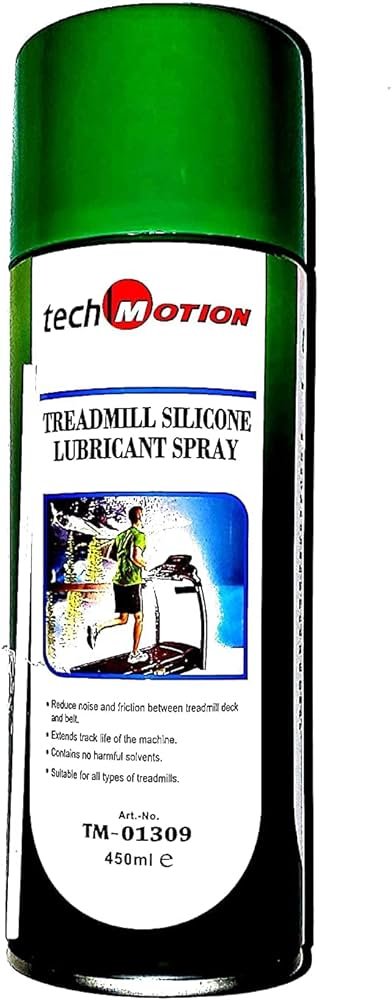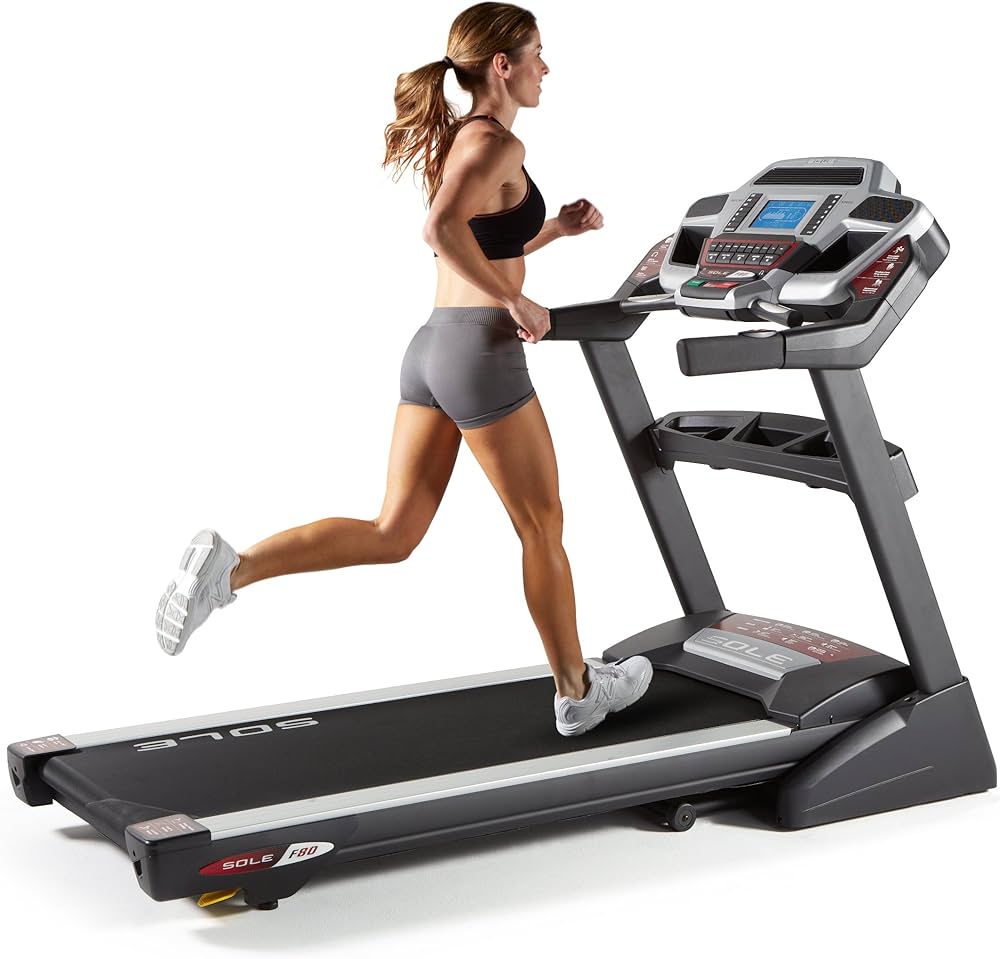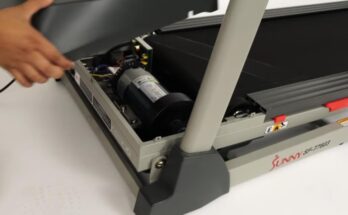To stop a treadmill from squeaking, regularly lubricate the belt and tighten any loose bolts. Ensure the treadmill is level and clean any debris from the belt and deck.
Embarking on a fitness journey at home with your trusty treadmill can hit a snag when unexpected squeaking sounds emerge. Treadmills are popular fitness equipment, indispensable for those who prefer the comfort and privacy of indoor cardio workouts. Regular maintenance is crucial to ensure your machine runs smoothly and quietly.
Dealing with a squeaky treadmill promptly not only contributes to a noise-free workout but also prolongs the life of your machine. Understanding the common reasons behind these irksome noises is the first step in resolving them. By keeping the moving parts adequately lubricated and the hardware correctly tightened, you can easily restore the peace and regain focus on your fitness goals. Remember, a well-maintained treadmill is an integral part of a consistent and enjoyable exercise regimen.
Identifying The Squeak
A treadmill squeak can be annoying, like a mosquito at a barbecue. It calls for a quick fix. Before grabbing your toolbox, find where that noise originates. A preventive approach is key to preserving your treadmill’s life and your sanity. Let’s locate that pesky squeak and understand the treadmill’s language of noises.
Locate The Noise Source
Start by powering off your treadmill. Safety comes first. Move the belt with your hand. Do you hear the squeak? This may point you to the culprit. Is the noise at the front, back, or underneath? Close listening finds the source faster.
- Front of the Treadmill: Could be motor or roller issues.
- Middle: Usually the deck or belt.
- Rear: Often indicates roller or belt misalignment.
- Underneath: Look out for frame or mechanism friction.
Types Of Treadmill Noises
| Noise Type | Possible Causes |
|---|---|
| Squeaking | Lack of lubrication, loose bolts, worn belt |
| Thumping | Uneven walking surface, misaligned belt |
| Grinding | Bearings issue, debris stuck |
| Whining | Motor or belt tension problem |
Each noise type leads to different action steps. Don’t ignore even the smallest sounds. They might signal upcoming repairs. Fix noises early to avoid bigger issues later.
Regular Maintenance
Regular treadmill maintenance is essential to prevent irritating squeaks that can interrupt your workout flow. By keeping routine checks and timely interventions, extend your treadmill’s life and enjoy silent, smooth runs. Let’s dive into practical maintenance tips to keep your treadmill in top-notch condition.
Lubrication Is Key
A well-oiled treadmill runs silently and smoothly. Regular lubrication reduces friction, which often causes squeaks. Use only silicone-based lubricants as recommended by your treadmill’s manufacturer. Apply lightly but evenly under the belt every few months or after a specified number of hours of use. Always refer to the user manual for specific guidance.
Cleaning The Treadmill
Dirt and debris can build up, leading to unwanted noise. Keep your treadmill clean to prevent squeaks. Wipe down exposed areas frequently. Use a cloth to remove dust from the deck. Check for small objects that may have lodged in the treadmill’s mechanisms. Regular cleaning not only prevents noise but also keeps your machine running efficiently.
Belt Alignment And Tension
An off-center or too-tight belt can cause squeaking. Ensure proper belt alignment and tension for a silent operation. Align the belt by adjusting the screws at the treadmill’s rear end. The belt should be tight enough to lift a few inches but not too tight as to strain the motor. Follow the manufacturer’s instructions for the recommended tension and realignment process.
- Check alignment monthly.
- Adjust as needed following simple steps from the manual.
- Do not over-tighten to avoid excessive wear.
Diy Troubleshooting
Do you hear a squeak each time you step onto your treadmill? Not only can this noise be annoying, but it may signal something in need of a fix. Let’s solve the mystery with some DIY troubleshooting. You don’t need to be a pro—an attentive ear and a willingness to get your hands dirty can take you far.
Tightening Loose Bolts
A common culprit for treadmill noise is loose bolts. Over time, the motion of running or walking can jiggle parts loose. A simple inspection and tightening routine can work wonders:
- Turn off and unplug your treadmill before inspecting.
- Use the right tools—usually an Allen wrench or screwdriver.
- Examine all bolts and screws, especially where the noise originates.
- Tighten any that seem loose, but don’t overtighten!
- Test the treadmill after tightening to check for squeaks.
Replacing Worn Parts
Squeaks often come from wear and tear on treadmill components. Parts like belts, decks, or bearings can wear down:
- Inspect belts for fraying or cracks.
- Look for wear signs on the deck.
- Feel for roughness in bearings or rollers.
- Order replacement parts specific to your model.
- Follow your treadmill’s manual for installation guidance.
Always double-check your treadmill’s warranty before starting DIY repairs. You may have coverage for some parts and professional service. Still squeaking after checking bolts and parts? It might be time to call in a technician for a closer look. Silence that squeak and get back to your uninterrupted workout routine.

Credit: www.amazon.com
Professional Assistance
Dealing with a squeaky treadmill can be frustrating. Sometimes simple home remedies won’t cut it, this is Professional Assistance comes into play.
When To Call A Technician
Identifying the right time to call a professional is crucial. Consider these scenarios:
- After basic troubleshooting fails.
- Persistent noise despite proper maintenance.
- Warranty conditions that require professional service.
Cost Vs. Benefits
It’s important to weigh the cost against the benefits of professional service.
| Cost Factors | Benefits |
|---|---|
| Professional fees | Expert diagnosis |
| Parts replacement | Prevention of further damage |
| Possible downtime | Long-term treadmill health |
Preventative Measures
Preventative Measures are key when maintaining a treadmill. A quiet workout is a happy workout. To ensure your treadmill runs smoothly and quietly, follow these crucial steps.
Optimal Placement
Positioning your treadmill on a level surface is crucial. An uneven floor can cause stress on the machine. It leads to squeaks. Use a spirit level to check evenness. Adjust the treadmill’s feet accordingly for balance.
Routine Inspection
Regular checks keep the treadmill quiet and safe. Tighten any loose bolts. Clean the belt to prevent debris build-up. Lube the belt every few months. Be sure to follow the manufacturer’s guide.
Using The Correct Mat
A high-quality mat under your treadmill does wonders. It reduces vibration and noise. Choose a mat that fits well and is designed for treadmills. It should be thick and durable.
| Task | Frequency | Benefit |
|---|---|---|
| Check Level | Before first use | Prevents imbalance |
| Tighten Bolts | Monthly | Secures components |
| Clean Belt | Weekly | Stops debris noise |
| Lube Belt | Every 3 months | Ensures smooth run |
| Mat Replacement | As needed | Dampens sounds |
- Level treadmill: Balance prevents stress.
- Tighten components: Regular tightening avoids squeaks.
- Clean and lube: A clean belt reduces noise.
- Correct mat: A sturdy mat absorbs sound.

Credit: m.youtube.com
User Habits That Reduce Noise
Keep your treadmill workouts quiet with simple user habits. Noise reduction is possible with correct running form and the right shoes. Learn how to run smoothly and choose footwear to stop squeaks. It’s easy and effective.
Proper Running Technique
Landing softly on the treadmill belt reduces noise. Focus on gentle heel-to-toe foot strikes. Avoid pounding your feet. Correct posture and a small stride help too. Quiet and proper running go hand in hand.
Footwear Considerations
Shoes make a big difference. Choose ones with cushioned soles. They absorb impact, quiet steps, and protect the treadmill. Replace old, worn-out shoes. Newer shoes mean less noise on your treadmill runs.
Remember:
- Running form matters – Keep it smooth.
- Shoes count – Cushioned, fresh, and fit for purpose.

Credit: www.amazon.com
Frequently Asked Questions On How Do I Stop My Treadmill From Squeaking?
Why Does My Treadmill Squeak When I Walk?
A treadmill squeaks due to loose parts, lack of lubrication, or worn-out components. Tightening screws and bolts or lubricating the belt can often fix it. Regular maintenance checks are recommended to prevent squeaking.
How Can I Lubricate My Treadmill?
You can lubricate your treadmill by powering it off and lifting the belt to apply a silicone-based lubricant. Spread it evenly under the belt on the deck surface. Consult your treadmill’s manual for specific lubrication requirements.
What Maintenance Prevents Treadmill Noise?
Regular maintenance, including belt alignment, proper lubrication, and bolt tightening, prevents noise. Check your treadmill monthly for any signs of wear and address issues promptly to avoid squeaks and other sounds.
Can A Worn Belt Cause Treadmill Squeaking?
Yes, a worn belt can cause treadmill squeaking. Over time, treadmill belts can stretch, fray, or lose their alignment, leading to noise. Inspecting and replacing the belt when it shows signs of wear is essential.
Conclusion
A squeaky treadmill can disrupt your workout routine. Regular maintenance and proper use ensure a smooth run. Don’t ignore persistent noise; it could signal a need for professional inspection. Adopt these steps for a quieter machine and enjoy your fitness journey, squeak-free.
Stay safe and keep moving!



